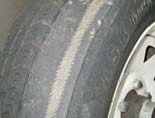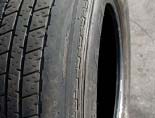Tips & Advice on Inspecting a Used Car
When you go to look at a car that you are interested in buying you should follow the tips and advice below. A preliminary check could save you a lot of money, time and heartache.
Check the car history
Ask for the used vehicle’s Licensing Certificate and check that the VIN (vehicle identification number) matches that on the car and that the sellers name and address is there. It is very important to confirm these details. The number is usually on the passenger side of the dash behind the windscreen or somewhere under the bonnet. You can use this VIN number to obtain a car history report. This step is crucial; accident and repair history are essential in determining if that shiny coat of paint is hiding something.
Check the condition of the used vehicle’s body
Walk around the entire length of the car and bend down and use the flashlight and mirror to look at some out-of-sight seams. Are the gaps around the doors even? Are there signs of rust, particularly above the tyres? (This is likely due to salt on the roads in the winter, but it could be signs of a previous accident.) Is the colour mismatched in any place? Use the magnet to see if the body is actual metal or Bondo, which is often used in vehicle restoration.
Check the tyres
What’s the brand of the tyres? Are they worn and where? Are there any cracks? What about the condition of the rims?
Check the engine
Make sure the engine is off (and has been for a time) and pop the bonnet. Bring along your paper towels. Is the engine relatively clean? Are there any signs of rust? Pop off the oil filler cap. Are there any thick black deposits? (This is not a good sign.) With engine running are there any unusual noises or excessive smoke?
Check the engine’s oil
Make sure the car is still off. Pull out the dipstick, wipe it as clean as you can with the paper towel, insert the dipstick back into the engine, and pull it out again. There should be “full” and “low” indicators. How high is the current level of oil? Is it a pale amber colour (good) or a dark, sludgy colour (bad)? Colour can tell a lot especially in relation to overheating or faulty head gasket!
Check the automatic transmission fluid
Make sure the car is level, the transmission is in park, and the parking break is on. Turn on the car’s engine. After it idles for a time, pull out the transmission dipstick and wipe it with a paper towel. Place it back and pull it out again. If the car had just been turned on, the fluid should be in between the “cold” indicators. (If it had been driven for a time directly prior to this check, expect it to be within the “hot” indicators.) It should also be a clear reddish colour A brown, sludgy colour means it has not been maintained.
If the transmission is manual, you can skip this step. However, when you take the used car for a test drive, make sure that all gear shifts are smooth and that, when driving in second or third gear, a sudden acceleration doesn’t make the clutch slip.
Check the brake fluid level
If it’s low, it could be leaking and/or the brake pads could be wearing.
Check the engine coolant
Make sure it’s relatively full and a yellowish-green colour Make sure there is no oil in it.
Do a final under-bonnet check.
Does the fan belt look worn? Is anything rusty or leaking?
Check the interior of the car
Are the seats worn or stained? How about the flooring? Do the visors and cupholders stick? What’s the condition of the seat belts? General wear on gear knob, steering wheel, foot pedals etc can all be indicators of mileage.
Test the electrical features
Make sure to try the car’s indoor lights and the power window controls. Turn on the car to test both the air conditioning and the heat. Here’s also when you can test the music system with the CD or cassette and rock out while you decide if you’ve got a real gem or lemon on your hands!
Finally: If you are doing a road test be careful the car is driving in a straight line, that there is a smooth gear change and that there are no unusual noise while driving in a straight line and also while cornering.
![]()



